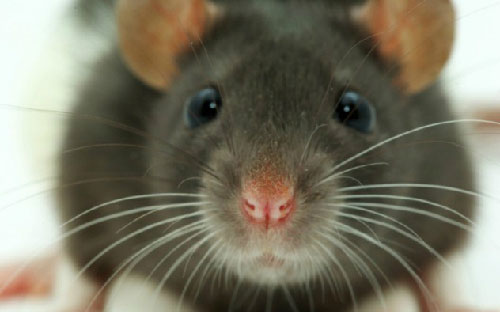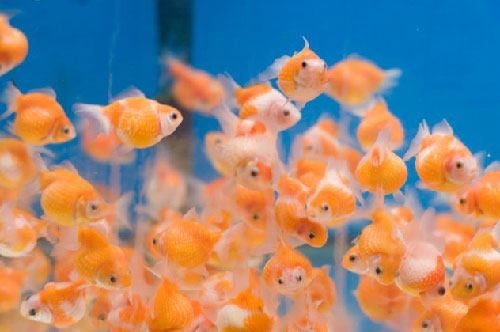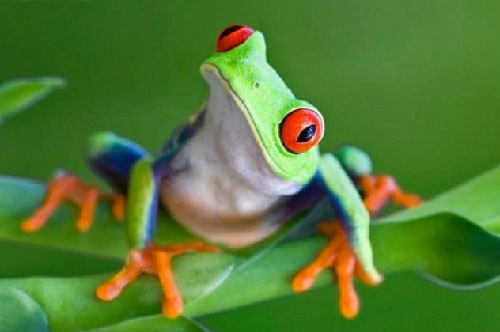10 animals are brought to space
The introduction of animals such as cats, chimpanzees, mice . into space according to space exploration plans is considered a stepping stone to achieve the goal of bringing people to zero gravity environment.
1. Cat

The Iranian government recently announced it would bring a Persian-like cat to space in early 2014 to fulfill its goals of conquering the universe. Earlier, France was the first country to put cats on space during a flight starting on October 18, 1963.
2. Rodents

Scientists have taken some rodents into space, such as mice, hamsters, and hamsters and conducted some experiments in space. In 2001, a biomedical engineer with the US Aerospace Agency (NASA) used mice to test a protein called osteoprotegerin. Jeffrey Alberts, a professor of psychology at Indiana University, USA, studied pregnant mice in zero gravity.
3. Goldfish

In 2012, the ship that supported HTV-3 of Japan set foot on the International Space Station ISS brought a goldfish aquarium to space and conducted many experiments with goldfish. These studies allow them to observe their internal organs easily. Like other animals, goldfish are examined for bone and muscle degradation. Although living in water, goldfish are also affected by gravity and when in space, they swim around instead of swimming straight.
4. Chimp

As animals have many relationships with humans, chimpanzee's contributions to space programs have been proven and appreciated. The first chimp into space called Ham trained at Holloman Air Force Base through a military system. Ham's flight test called Mercury-Redstone 2 took off from Cape Canaveral, Florida on January 31, 1961. Enos, a better trained chimpanzee was also put on the planet's orbit twice.
5. Monkey

Many monkeys have been brought to space like squirrel monkeys and brown monkeys. Known for his contributions to medical research, the extremely intelligent brown monkey is the first primate to be cloned. The brown monkey Albert II was the first monkey to be introduced to space after Albert's mother monkey suffocated during a flight. Argentina, France, and Russia have also used monkeys in space flights. However, many of them cannot survive.
6. Amphibian animals

Amphibians such as frogs, toads and newts have been used by scientists for a long time to assess the living conditions of an environment. Due to being able to live on land and underwater, amphibians are always species that must cope with environmental changes such as climate change, pollution and diseases. Many frogs have been taken up into space. Iberian newts were also introduced into space many times, starting with Russia's Bion 7 flight in 1985. Scientists want to study the influence of the spatial environment on the regeneration of this amphibian species. .
7. Round worms

Nematode worms are mostly parasites that can cause flukes in pigs and dogs. The animal has also been taken to space many times, including a flight to the moon with Apollo 16. In 2003, space shuttle Columbia exploded as it continued to fly into Earth's atmosphere, causing 7 Astronauts on board were killed. Meanwhile, a round worm in the laboratory box was discovered in the rubble still alive.
8. Water bears

Water bears are one of the most sensitive organisms on the planet, capable of surviving in harsh conditions that many other living creatures cannot survive. In 2007, about 3,000 water bears were put into space on the European Space Agency's Foton-M3 and proved to be able to withstand the vacuum environment of space.
9. Spiders

Although the most hated and terrifying creature on Earth, spiders are still selected to be included in space programs. In 2011, two golden eye spiders named Gladys and Esmerelda were taken to the ISS International Space Station, where they could spin and hunt in a zero gravity environment. A spider named Nefertiti lived on ISS during 2011 but did not spread silk, but instead attacked the prey. The gravityless environment seems to have little effect on this spider's ability to hunt.
10. Dog

The Soviet Union used to take many dogs into space. Laika dog was the first animal to be put into orbit with the suicide mission of Sputnik 2. While most animals were put into space for the purpose of surviving, Laika was brought to space. synonymous with being unable to survive. In 1960, two dogs Belka and Strelka became the first animals to survive in orbit. A year later, Strelka gave birth. One of them called Pushinka was donated to the children of US President John F. Kennedy.
- Iran will take animals to space
- The origin of marine mammals
- Europe launched a campaign to conquer new space
- Kepler Space Telescope is about to stop working
- In 2007, Malaysia brought its first astronaut into space
- American spacecraft flew into space
- The first female tourist to fly into space
- Bacteria are more toxic when flying into space
- Sao la is captured in Laos
- Vietnamese flowers fly into space
- Astronauts are about to eat green vegetables grown in space
- NASA revealed super missiles that brought people to Mars
 Animal 'suffering' after hibernation
Animal 'suffering' after hibernation Why do goats climb well?
Why do goats climb well? Scientists were surprised to see chimpanzees eating turtles
Scientists were surprised to see chimpanzees eating turtles Giant catfish died deadly due to drought in Thailand
Giant catfish died deadly due to drought in Thailand 'Strange smell' detected on cargo spacecraft to ISS
'Strange smell' detected on cargo spacecraft to ISS  After 4 years of being sent into space by Elon Musk, what is the fate of the $100,000 Tesla Roadster now?
After 4 years of being sent into space by Elon Musk, what is the fate of the $100,000 Tesla Roadster now?  The Shape of the Universe Isn't What You Think: From Ancient Round Sky to Modern Three-Dimensional Donut
The Shape of the Universe Isn't What You Think: From Ancient Round Sky to Modern Three-Dimensional Donut  How to get back to the spacecraft if the astronauts leave the cabin to work and accidentally drift away?
How to get back to the spacecraft if the astronauts leave the cabin to work and accidentally drift away?  Announcement of discovery of micro-asteroid population in the Solar System
Announcement of discovery of micro-asteroid population in the Solar System  Solving 'traffic jams' in space
Solving 'traffic jams' in space 